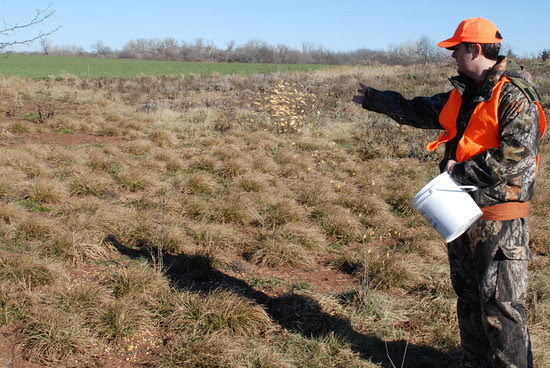Grains are often used to supplement or bait wildlife, but can be contaminated with fungi or pesticides that may be highly toxic to wildlife. The Wildlife Department partnered with the Oklahoma Cooperative Extension Service to develop the following best management practices should you chose to offer supplemental food to wildlife.
- Consider your objectives. Do you need to offer supplemental food? Are there other ways to meet your objectives?
- Check the tag. Only feed grain that has been tested for aflatoxin and meets USDA approved levels for feeding to livestock. If the tag doesn't indicate aflatoxin levels, ask for any testing results before purchasing.
- Broadcast, don't pile. Dispersing the grain as much as possible can help reduce the buildup of the fungus responsible for aflatoxin.
- Clean feeders regularly. Use a 1-part bleach to 9-part water solution to clean feeders. Avoid refilling grain without first emptying, cleaning, and fully drying feeders.
- Avoid treated seeds if wildlife is the goal. Neonicotinoids protect crops from pest insects. Those insects may then be consumed by insectivorous birds.
Get more tips
